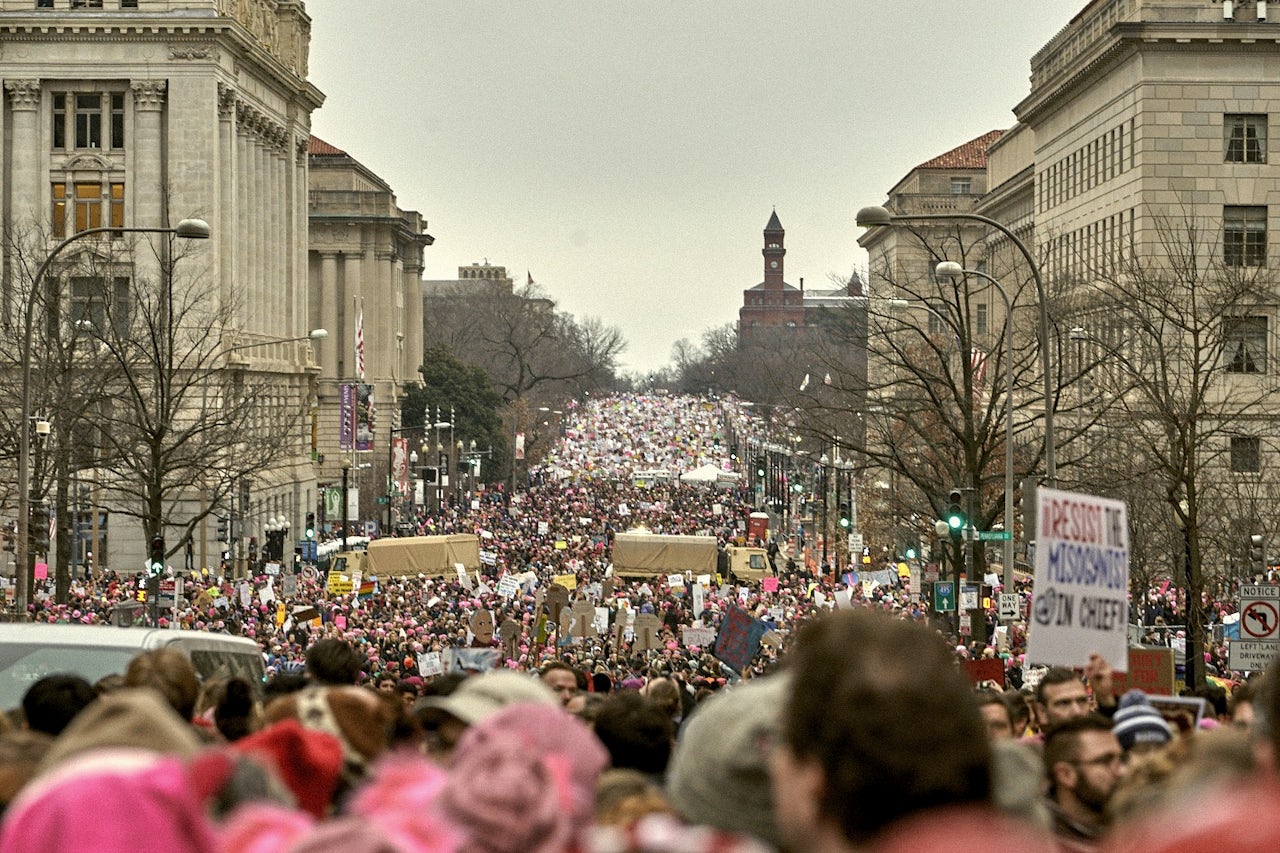On the first full day of Donald Trump’s presidency, I stood in the middle of a crowded Manhattan street with thousands of other people — mostly women — in protest of the incoming administration. I say stood instead of marched because the protest, billed as a Women’s March against Trump, was so well-attended that the crowd was at a standstill.
The event felt spontaneous, like the eruption of decades of female rage finally harnessed against a single, repulsive enemy. In a way, it kind of was: The night after the 2016 presidential election, one Hawaii woman made a Facebook event planning a women’s protest against Trump in Washington, D.C. By the time she woke up the next morning, 10,000 people said they’d be attending. Her idea metastasized, eventually growing so big that she could no longer control it. Professional, experienced activists were called in to organize the march. Planned Parenthood signed up as a sponsor. Permits were secured. But in New York City, the day still felt chaotic. The energy was infectious, but I worried it couldn’t last.
At that time, no one knew exactly what a Trump presidency would look like, but we knew it would be bad. A year later, things are simultaneously better and worse than I thought. Immigration arrests are at record highs, corporations are getting a fat tax cut thanks to Congressional Republicans, and we may or may not be under threat of nuclear war — but at least the president is so incompetent he hasn’t yet been able to achieve many of the other terrible things on his terrible agenda. When we marched, it was an emotional response to the unknown dangers of a Trump presidency; this year’s event is a strategic plan to dismantle it from the bottom up.
The evolution of the event, organized by the now-official Women’s March Inc., is striking. This year, it will be in Las Vegas, Nevada — a swing state where immigration, gun control, and sexual assault are all pressing issues — instead of the nation’s capital, and a includes a roster of yet-to-be-announced speakers and a voter registration booth. Like last year, there are sister marches planned in virtually every city in the country, and dozens more overseas. The theme is “Power to the Polls,” an arguably less sexy but more impactful message than righteous, vague anti-Trump anger.
And in any case, it would be impossible to launch a million-person march on the capitol every time the president or one of his cronies does something awful, because the hallmark of a Trump presidency is that awful things happen every single day. Protesting is exhausting. People get tired. Sometimes they get arrested. Sometimes they get killed. Protests are exciting, but real change is effected by the grueling, day-to-day work of organizing and by the few people who remember to vote in midterm and off-year elections. In red states, the group March On — which is loosely related to, but not directly affiliated with Women’s March, Inc. — has galvanized women into action against local officials. Last December, the group EMILY’s List, which works to elect left-leaning women to office, announced that more than 25,000 women across the country women had reached out to them about running for public office. The Women’s March is no longer about Trump, nor is it about women: It’s about winning elections.
The people who tend to vote in midterm and special elections are typically old, white, out-of-touch conservatives, which is one of several reasons the government is currently run by old, white, out-of-touch conservatives. (Other reasons include gerrymandering, poverty, racist voting laws, and policies that disenfranchise people with past felony convictions, all of which are worthy causes the Women’s March and other organizations can and should be fighting against.) If last year’s Women’s March alerted millions of people that something is broken in our political system, this year’s event is a signal that changes don’t begin and end with a single protest — and, most importantly, that these problems don’t begin and end with a single president.



